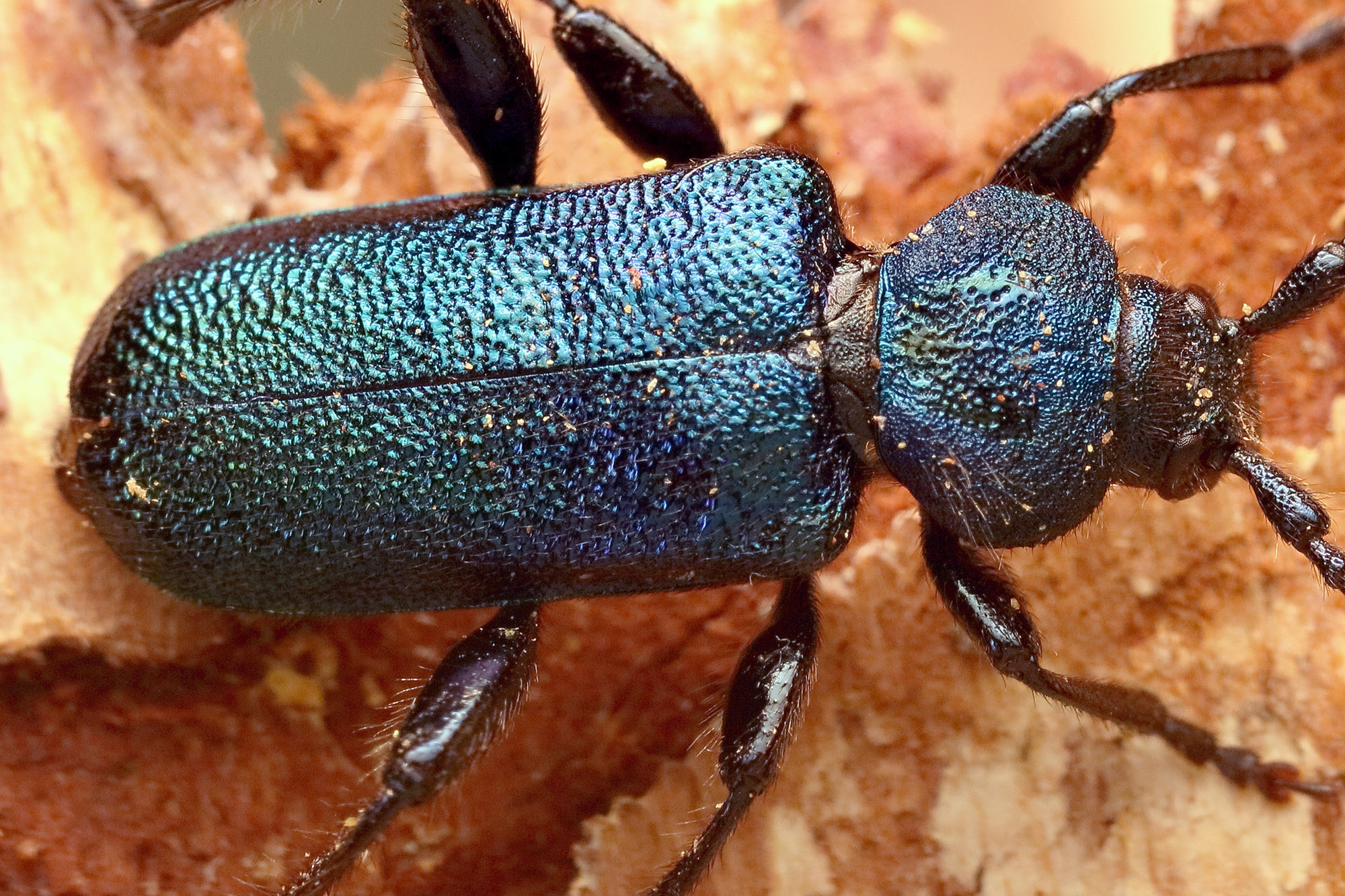Subfamilia: CERAMBYCINAE / Tribus: CALLIDIINI

[Photo © Milan Lovětínský]
Callidium violaceum is a common European species, prevalent in coniferous woodlands, hedgerows and sites with man-made unpeeled coniferous wood (roof frames, wooden fences and firewood). Usual development under the bark of dead conifers, where the larvae bore a typical wide flat galleries. Before the pupation, larva bore into the wood the hook-shape pupal cell. In the absence of fresh wood, females lay their eggs in the same material for several years, until the wood is almost completely consumed and destroyed (the wood then resembles damage from Hylotrupes bajulus). Life-cycle under normal forest conditions one year, when attacking dry wood (e.g. roof frames, wooden boards) as well as 3 years or even more (but usually reported life-cycle is 2 years). Overwintering as larva, pupation in spring, adults occur from early May to July. Rather a nocturnal species, flying occasionally during the daylight. Adults can be found on logs, fallen/dying conifers and also on coniferous firewood or constructions/objects made from unpeeled wood.
Body length: 8 - 16 mm Life cycle: 1-2 years Adults in: May - August Host plant: polyphagous in conifers (Pinus, Picea, Larix, Abies) Distribution: Europe, Russia, Caucasus, Transcaucasia
The depicted living beetle was reared from larva found in Křivoklátsko Protected Landscape Area (Central Bohemia, Czechia). The mounted specimens were collected on Norway spruce (Picea abies) logs in Zbraslav (Prague, Central Bohemia, Czechia).Collected by Miroslav Polcar and M.Hoskovec

[Photo © M.Hoskovec]


[Photo © Milan Lovětínský]
Subfamilia: Cerambycinae Latreille, 1802
Tribus: Callidiini Mulsant, 1839
Genus: Callidium Fabricius, 1775
Species: Callidium violaceum (Linnaeus, 1758)
